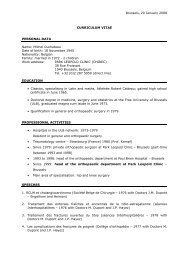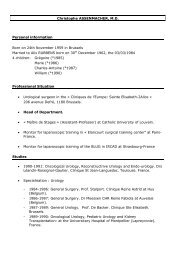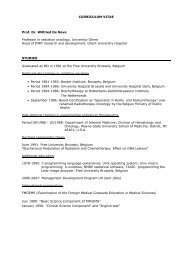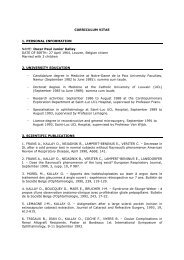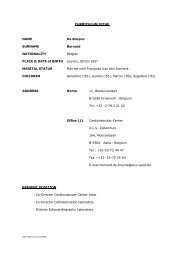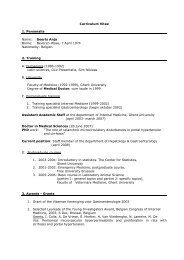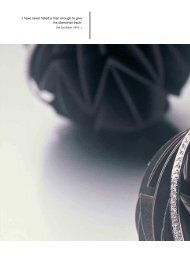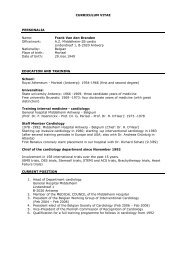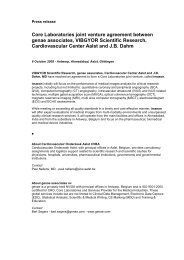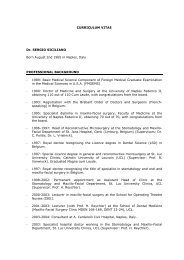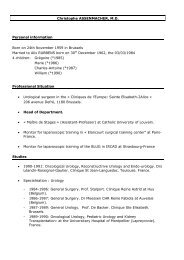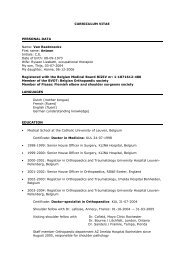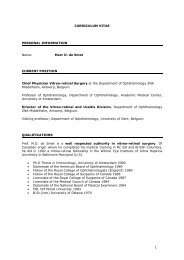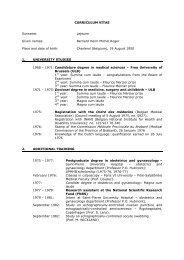Download PDF - HealthCare Belgium
Download PDF - HealthCare Belgium
Download PDF - HealthCare Belgium
Create successful ePaper yourself
Turn your PDF publications into a flip-book with our unique Google optimized e-Paper software.
Finally, and strange as this may seem, the greatest ‘risk’ that an<br />
egg donor runs is of becoming pregnant herself during treatment!<br />
If she had no plans in this sense, this can be a severe problem.<br />
Egg donors are therefore expected to refrain from unprotected<br />
sexual relations for a significant period of time. Total abstention<br />
from all sexual activity at the end of the stimulation cycle is<br />
necessary. She must also avoid intercourse for several days after<br />
egg collection (pick-up) unless protected by a condom to avoid<br />
fertilization of any remaining ripe eggs.<br />
THE TREATMENT<br />
Timing and synchronisation<br />
The fact that eggs cannot yet be frozen and stored presents a<br />
further complication for egg donors. This means that fresh eggs<br />
are always required, and the donor’s and the recipient’s treatments<br />
need to be perfectly synchronised.<br />
The donor follows the IVF treatment course through to egg pickup:<br />
medical screening and analyses, ovarian stimulation via<br />
hormone injections, intermediate blood tests, ultrasound scans<br />
and, finally, an hCG injection to conclude the egg ripening process.<br />
For precise details, we refer to the ‘Medical practice’ section, p. 31<br />
and further on.<br />
Naturally, the egg recipient follows the same procedures as for<br />
embryo transfer in the full IVF treatment. Her womb is prepared to<br />
receive the embryo after (medically) fooling the normal menstrual<br />
cycle into an artificially-induced cycle.<br />
Because of all these factors, the<br />
CRG pays great attention to medical<br />
counselling of egg donors. As a result<br />
of the severe shortage of donor eggs,<br />
we apply our greatest professional<br />
skills because we expect a high degree<br />
of commitment and motivation from<br />
egg donors. Every measure is taken<br />
to reduce the risk of infection to the<br />
smallest possible degree.<br />
Why an artificial cycle<br />
Egg cells must be fertilized as quickly as possible after collection, with the recipient man’s sperm. Then ideally,<br />
one or two of the resulting embryos are placed in the recipient woman’s uterus three days or five days after<br />
conception. The artificial cycle means that the uterus can easily be kept in an optimal condition for the arrival<br />
of the embryos for a number of days. The hormones used to do this have no negative effects, even with<br />
prolonged use.<br />
In practice, the recipient’s cycle is always synchronised to the<br />
donor’s cycle. If the donor is ready for egg pick-up, the recipient’s<br />
womb must be prepared for embryo transfer. Naturally, a delay of<br />
three or five days is also required between pick-up and transfer to<br />
allow for insemination and development of the fertilized eggs into<br />
embryos.<br />
Insemination: preferably by ICSI<br />
The recipient man is expected to supply a fresh sperm sample on<br />
the day the eggs are collected from the egg donor; this sperm is<br />
used immediately to inseminate the eggs.<br />
DONATION<br />
101




